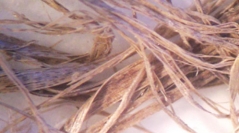

 Comptes Rendus Palevol
22 (21) - Pages 467-478
Comptes Rendus Palevol
22 (21) - Pages 467-478Portus was the main port of imperial Rome from the 2nd century AD to the 5th century AD, with an inner, hexagonal port (Trajan basin) and an outer port (Claudius basin) linked by a channel bounded by quays. Six sedimentary facies have been differentiated in the geological analysis of a core extracted in this channel, basically composed of poorly classified bioclastic muds typical of restricted environments, accumulations of Posidonia oceanica (Linnaeus) Delile, 1813 and a final anthropic fill. The subfossil record of bivalves, foraminifera and ostracods is characteristic of Mediterranean brackish environments (lagoons, estuaries, deltas) with significant environmental stress, due to changes in the physical-chemical parameters and probably the periodic dredging of this seaway during a period of about 300 years. The presence of “Neptune balls” points to the development of probable stormy periods that deposit these unique structures in the internal areas of this historic port.
Sedimentology, fossil record, channel fill, paleoenvironments, Portus, imperial Rome, Central Italy